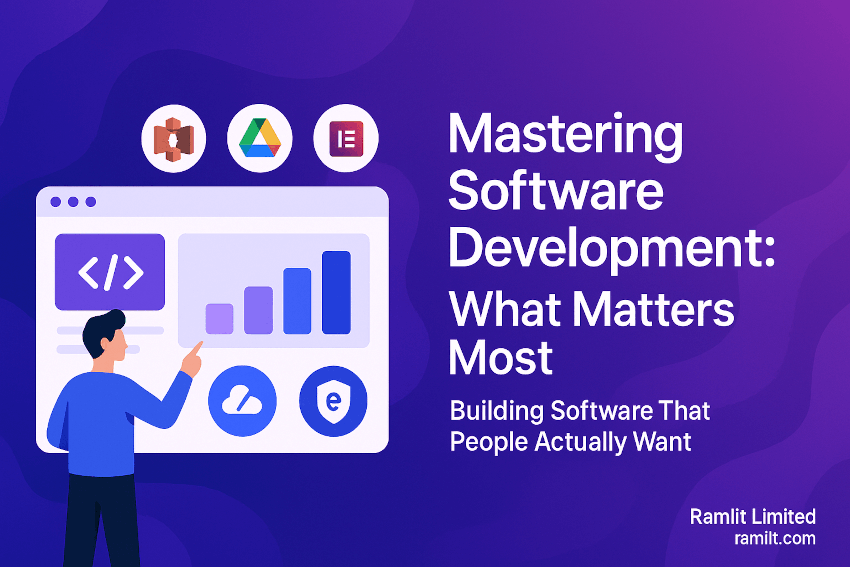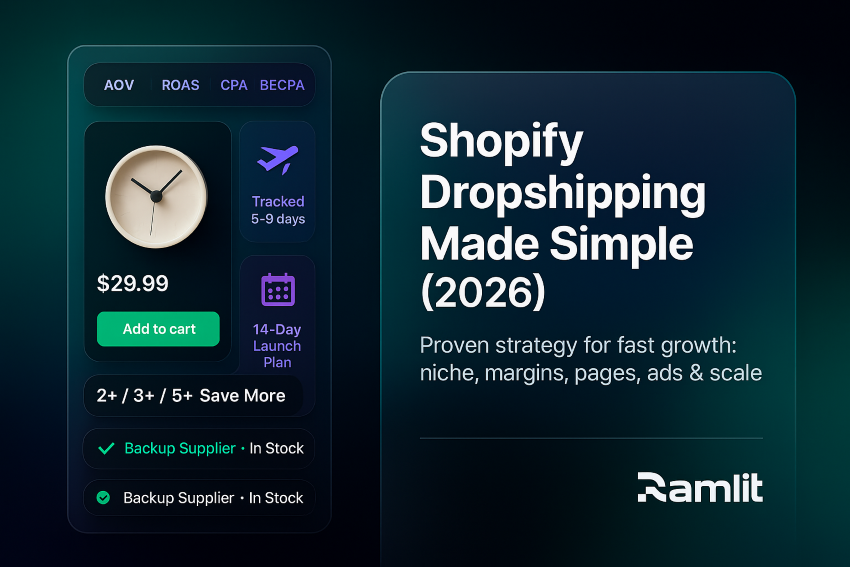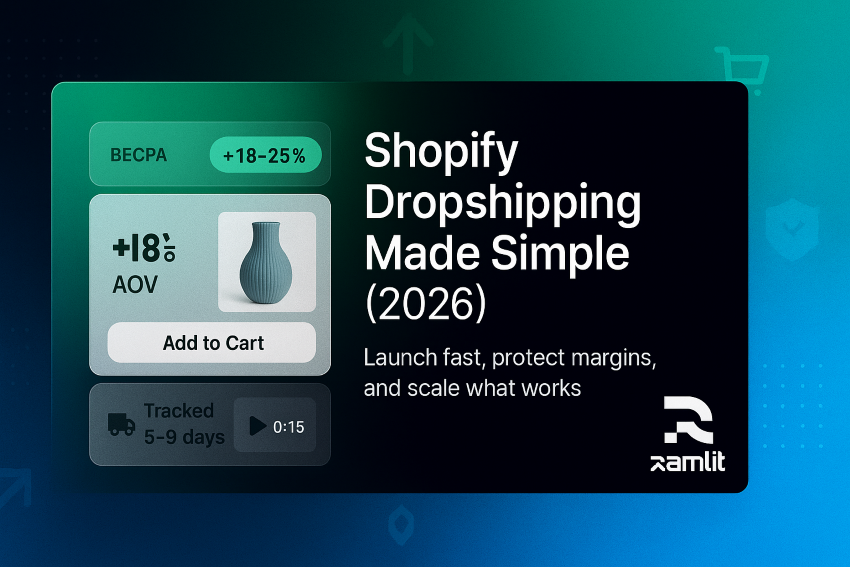Introduction
What makes software development truly effective? Is it clean code? Agile methodologies? Smart developers? While each plays a role, the true essence of software development goes far beyond syntax and tools. It’s a craft, a mindset, and a process that translates human needs into reliable digital experiences.
In a world where software is everywhere—from your fitness app to financial systems—the pressure to build better, faster, and smarter is relentless. Yet, many developers and teams still struggle with unclear requirements, buggy releases, and missed deadlines. Sound familiar?
This article uncovers what really drives great software development. Whether you're a junior coder, a seasoned engineer, or a tech manager, you'll walk away with a clear understanding of the core principles, practical strategies, and a refreshed perspective on building software that works—for users, teams, and businesses alike.
The Core of Software Development
🧠 It Starts with Solving Real Problems
At its heart, software exists to solve a problem. That could be as complex as simulating climate models or as simple as automating email replies. The tools, languages, and architectures are just the medium. The purpose is what matters.
- Bad software focuses on features.
- Good software focuses on use cases.
- Great software solves real pain points.
Example: A photo-sharing app isn’t about filters or likes. It’s about helping people share moments easily and meaningfully. That shift in mindset—from building tools to enabling outcomes—is where true development starts.
The Key Pillars of Software Development
Let’s break down the foundations that support sustainable and impactful software development.
1. Understanding Requirements—Beyond the Surface
💬 Why Projects Fail: The Communication Gap
One of the top reasons projects derail is misunderstood or shifting requirements. Developers code what they think is needed—not what the user truly wants.
Solutions:
- Ask "Why" frequently. Understand the business context behind a feature.
- Use user stories and personas. Empathy helps code align with user needs.
- Validate early. Share wireframes or prototypes before writing a single line of code.
📌 Tip: Great software is born from collaboration, not assumption.
2. Design Before You Build
🎯 Software Architecture = Strategic Thinking
Just like building a house, software needs a blueprint. That includes:
- Clear separation of concerns
- Scalable architecture
- Modular design
A rushed MVP without thoughtful architecture can lead to technical debt that drags a team down for years.
Example: Monolithic systems may work early on, but if not modularized, they become bottlenecks in future development.
"Measure twice, cut once" applies here more than ever.
3. Code Is Communication
🧾 Readable Code > Clever Code
Code should be easy to read, maintain, and extend. Why? Because most time isn't spent writing new code—it's spent understanding existing code.
Best practices include:
- Meaningful variable and function names
- Proper indentation and consistent formatting
- Commenting for why, not what
- Avoiding premature optimization
Clean code saves time, reduces bugs, and improves team agility.
4. Testing Is Not Optional
🧪 Bugs Are Inevitable—But Unacceptable
Testing isn't just for QA engineers. Developers should write:
- Unit tests to verify logic
- Integration tests to ensure components work together
- End-to-end tests to simulate user experience
Bonus: TDD (Test-Driven Development) encourages clarity of intent before implementation.
Think of tests as the safety net that allows you to refactor with confidence.
5. Version Control = Sanity
⏳ Git or Regret It
No modern team survives without version control. It allows:
- Tracking changes
- Rolling back mistakes
- Collaborating asynchronously
Pro Tips:
- Branch naming conventions matter
- Use pull requests for code reviews
- Never push to main without review
A well-managed repo is the sign of a disciplined development team.
6. Continuous Integration & Deployment (CI/CD)
🚀 Faster, Safer Releases
CI/CD isn’t just for big companies. Automating your build, test, and deploy pipeline:
- Catches bugs early
- Reduces manual errors
- Speeds up release cycles
Popular tools: GitHub Actions, GitLab CI, CircleCI, Jenkins
Don’t fear deployment. Automate it.
7. User Feedback Loop
🗣️ Shipping Code ≠ Done
Once your code is in production, the real feedback begins.
Track usage with:
- Analytics (e.g., Mixpanel, Google Analytics)
- Error reporting (e.g., Sentry, Rollbar)
- User surveys and usability tests
Why it matters: What works in staging may fail in the wild. Real users are your best testers and teachers.
The Human Side of Software Development
💼 It’s a Team Sport
Even solo developers interact with clients, users, or stakeholders. Communication, emotional intelligence, and time management are just as critical as technical skills.
Success looks like:
- Saying “I don’t know” when needed
- Asking for feedback early and often
- Supporting teammates, not just shipping features
🧘♂️ Avoiding Burnout & Staying Curious
Software development can be intense. Deadlines, debugging, and constant change take a toll.
Stay sustainable by:
- Setting boundaries (work-life balance is real)
- Learning new tools gradually—not all at once
- Taking breaks to gain clarity
Your mind is your main tool. Treat it well.
Modern Software Development Methodologies
✅ Agile: Flexible, Iterative Progress
Scrum, Kanban, or hybrid approaches aim to:
- Deliver value early
- Adapt to changing needs
- Empower teams
🛠️ DevOps: Bridging Dev and Ops
DevOps is about breaking silos. Developers and ops teams work together on:
- Infrastructure automation
- Monitoring
- Security
🧩 Lean: Maximum Value, Minimum Waste
Focus on user value, and eliminate unnecessary features. Start small, validate, and grow iteratively.
The best software evolves with its users.
Quick Takeaways
- 💡 Understand the "why" behind every feature
- 📐 Design before you code
- 🧼 Write readable, maintainable code
- 🧪 Test early, test often
- 🗂️ Use version control religiously
- 🚀 Automate builds and deployments
- 🧠 Learn from real users
- 🤝 Collaboration beats individual genius
- 🌱 Stay curious, not overwhelmed
Call to Action (CTA)
Whether you’re building your first app or leading an enterprise project, remember this:
Software development is more than coding—it's crafting solutions that matter.
If you found this post helpful, share it with your team or network. Want more deep dives like this? Subscribe to our newsletter (Get Expert) for insights on clean code, smart development, and real-world tech leadership.
FAQ Section
What is the core goal of software development?
To create software that solves real problems effectively and sustainably while serving the user’s needs.
Why do so many software projects fail?
Poor communication, unclear requirements, technical debt, and lack of testing are common culprits.
How important is clean code?
Extremely. Clean code improves readability, maintainability, and reduces bugs—saving time and money long-term.
Is Agile always the best approach?
Not always. Agile is great for changing requirements, but teams should adapt their methods to fit the context and project size.
What tools should every developer know?
At minimum: Git, a code editor (e.g., VS Code), CI/CD tools, testing frameworks, and task trackers like Jira or Trello.




